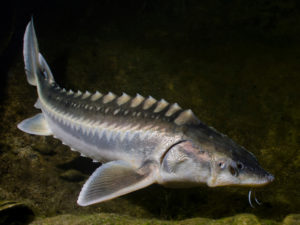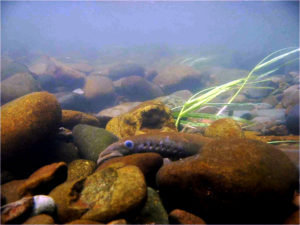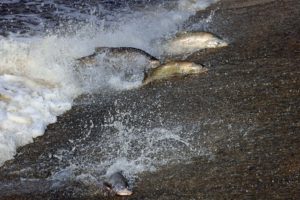During the 2004-2005 winter salmon spawning season in Redwood Creek, which passes through Muir Woods National Monument before reaching the ocean at Muir Beach, scientists and volunteers with the Coho and Steelhead Monitoring Program counted 93 coho salmon redds (nests) and 171 returning coho adults. That was the highest number on record since surveys began in 1994, says fishery biologist Michael Reichmuth. In spring 2006, researchers determined that 3,253 coho smolts (juveniles) headed for the open ocean that year. That was good reason to celebrate the survival of the state and federally listed Central California Coast coho.
Donning full-body waders, Reichmuth and volunteers slipped into Redwood Creek this past January 31 for a last-minute survey before impending storms. Their hopes were high because this was the year that the progeny from that prolific 2004-2005 spawning season were due back in the creeks. With clipboards and measuring sticks in hand, the surveyors waded carefully up the creek looking for coho redds and spawning fish. But they observed none.
In a February 4 email to volunteers, Reichmuth wrote, “It is looking less likely that a fresh run of coho salmon will move into our coastal watersheds.” For the entire spawning season, from late November to early February, they didn’t find a single redd or coho salmon in Redwood Creek. The bad news continued in the watersheds to the north, where researchers counted fewer than expected returning coho in Pine Gulch and Olema Creeks. In the Lagunitas, Devil’s Gulch, and San Geronimo Creek watersheds, usually the most productive for coho spawning, only 148 spawners returned this year, compared to 493 in the 2004-2005 season. Concern over declining salmon populations has prompted a two-year moratorium on new construction within 100 feet of streams in the San Geronimo Valley. While the moratorium is in effect, the County of Marin and the Salmon Protection and Watershed Network (SPAWN) will prepare a watershed enhancement plan.
Stream conditions are vital for a salmon’s survival, but Reichmuth believes there was another factor at play. “The salmon probably got out to the ocean and starved,” he says. The summer of 2006, when the 3,253 Redwood Creek smolts left the watershed, was one of the worst on record for upwelling along the California coast, meaning that there wasn’t much food for the many fish, birds, and marine mammals that depend on nutrients supplied by seasonal upwelling. “We knew it would be bad, but didn’t know it would be this bad,” he said. “If you have a healthy watershed and a healthy fish population, the population can withstand cyclical catastrophes. But if the population is too small, it gets down to having nothing left.”

.jpg)


